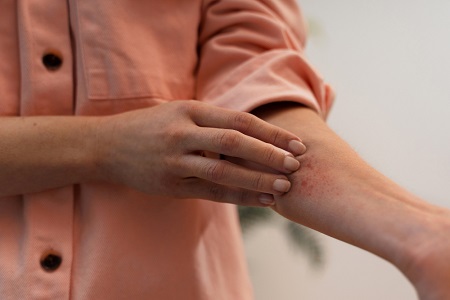White Patches on the Skin – A Treatable Condition
 Being conscious of one’s appearance is not vanity – it is a sign of self-care and self-respect. Anything that affects the way we look affects our interaction with the world around us. That includes our professional lives, familial and social interactions and personal relationships. Changes in appearance because of aging are natural and not a cause for concern or loss of self-confidence – it happens to everyone. However, changes caused by disease are another matter. These are often treatable. One such skin condition is vitiligo – the development of pale or white patches on the skin.
Being conscious of one’s appearance is not vanity – it is a sign of self-care and self-respect. Anything that affects the way we look affects our interaction with the world around us. That includes our professional lives, familial and social interactions and personal relationships. Changes in appearance because of aging are natural and not a cause for concern or loss of self-confidence – it happens to everyone. However, changes caused by disease are another matter. These are often treatable. One such skin condition is vitiligo – the development of pale or white patches on the skin.
Understanding Vitiligo
Vitiligo is a condition that causes the skin to lose its natural colour. It manifests as patches on various parts of the body as these areas lose their pigmentation and become pale or white. If the patches develop on areas of skin that have hair, the hair may turn silver or white. The loss of pigmentation happens because the melanocytes, the cells which give the skin its colour, stop producing pigment.
Types of Vitiligo
Vitiligo may take various forms including:
- Generalized – This is the most common form and the white patches are seen at various places on the body.
- Segmental – In this form, only one area or one side of the body is affected. Among the most common places are the face or hands.
- Focal – This form occurs on one specific part of the body and remains there without spreading for a few years.
- Universal – The universal form is rare and causes loss of pigmentation to over 80% of the skin.
- Trichome – In this form, a central white dot develops which is surrounded by a slightly darker area and then the rest of the skin on that part of the body retains its natural hue.
Also Read: Causes, Symptoms and Treatment of Eczema
Vitiligo Causes
The reason a person sustains this condition is still not certain. However, research indicates that the likely causes could be one of the following:
- Genetic factors that cause your DNA to mutate and affect the functioning of the melanocytes.
- An autoimmune condition.
- Stress, both physical and mental, over prolonged periods may be linked to the onset of the condition.
- Environmental factors like UV radiation or chemical exposure.
The Vitiligo Symptoms
There are two symptoms for the condition:
- Patches of skin that lose their natural colour.
- Patches of hair on the body that turn gray, silver or white.
These signs may appear on any part of the body and the effect may remain limited to a specific area of skin or it may spread to different parts of the body. In some cases, the skin may become itchy when the loss of colour starts.
Vitiligo Treatment
Vitiligo is not a life-threatening condition and does not have any major effect on a person’s daily life and activities. However, even though it is mainly cosmetic, the condition can have serious mental, emotional and psychological side-effects as a patient’s appearance and the way he or she is viewed by the world changes. If you have vitiligo and the condition makes you unhappy or self-conscious, there are treatments available which include:
- Medications to slow the spread of the condition and promote the regrowth of melanocytes.
- Light therapy that uses ultraviolet light or medical lasers directed at the affected parts of the skin for multiple short periods of time to increase the level of pigmentation. In some cases, this may be combined with oral medication.
- Depigmentation therapy is the opposite of other treatments in that it uses medication to reduce the natural darkness of the skin so that the rest of the body matches the areas affected by vitiligo.
- Surgery may be advised if other options are not working. It involves removing a layer of skin from one part of the body not affected by vitiligo and using that skin to cover an affected area. Different surgical procedures may be used for this.
Also Read: தோல் வியாதிகள் மற்றும் அவற்றைப் புறக்கணிப்பதால் ஏற்படும் அபாயங்கள்
The decision on the type of treatment will be taken by your dermatologist based on physical examinations, various types of tests and other health issues that may affect the outcome of the vitiligo treatment.
Patches of skin with different pigmentation could have various causes. That said, the condition is not one that can be safely ignored. It is important to consult a dermatologist at a hospital with a fully functional dermatology department where qualified specialists, advanced diagnostic facilities and world-class treatment options are available.
While vitiligo is not life-threatening, it can affect the quality of your life. That is reason enough to get the best possible treatment for it.
Importance of skin and how to keep it healthy
- Nov 30, 2023
